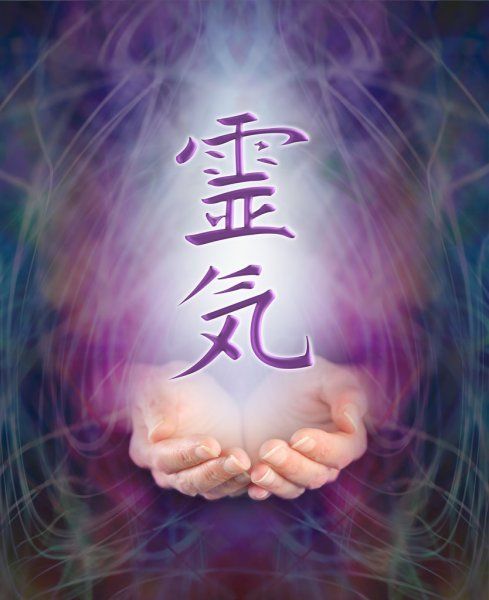What is Reiki - A brief history
Reiki is a safe, gentle, non-intrusive healing technique which can be used on yourself or with others. Reiki uses spiritual energy to treat physical ailments without the use of pressure, manipulation or massage. Reiki is a holistic system for balancing, healing and harmonising all aspects of a person – emotional, physical, psychological and spiritually. Reiki can be used for spiritual growth.
Reiki is a Japanese work meaning “universal life for energy” or “spiritual energy.
Rei can be translated as “the wisdom and knowledge of all the Universe”.
Ki is the life-force energy which flows through every living thing (plants, animals, people). It is present in some form in everything around us – even in rocks and inanimate objects.
In Japan the word “Reiki” is used to describe any form of healing using spiritual energy, but in the West when we refer to Reiki, it is the practice developed by a Japanese Buddhist priest Dr Mikao Usui (1865-1926).
Reiki is a healing system that has been used and taught in the west since the late 1930’s. Dr Usui, a Buddhist priest, on a quest to find out how Jesus and Buddha were able to heal, went on a 21-day fasting retreat. Apparently, he was struck by a great light and saw sacred symbols, and achieved enlightenment. Upon this, he rushed down the mountain and hurt his foot. He bent down to hold his toe and found that the bleeding stopped; he was healed. Later, he was said to have healed a young girl of toothache and he became aware that he had discovered the healing power of which he had been searching for.
He spent many years healing in Japan before passing his knowledge and complete teachings on to 17 people, including Dr Chujiro Hayashi (1879-1940). After Dr Usui’s death, Dr Hayashi opened a Reiki clinic and a young woman from Hawaii, Hawayo Takata (1900-1980) came to the clinic for healing. She was so impressed that she begged to be allowed to learn Reiki. Mrs Takata returned to Hawaii and opended the first Reiki clinic in the West.
Dr Hayashi visited her in Hawaii in 1938 and taught her the final teachings so she could continue to teach Reiki. She held classes in two levels of Reiki which she called First Degree and Second Degree. It was not until the 1970’s that she began to teach the Third Degree – Reiki Master – so that other people could then pass on Reiki teachings once she had passed on. By the time of her death, she had trained 22 Masters and it is through them that Reiki has spread throughout the Western world.
Mrs Takata established a system of teaching Reiki that survives to this day. It uses a ceremonial spiritual empowerment, called initiation, – which transfers healing abilities to her students. She taught the four Reiki symbols. These symbols plus the use of Reiki mantra’s are used to increase the strength of Reiki. Reiki was originally taught via an oral tradition. It wasn’t until after Mrs Takata’s death that a group of Reiki Masters gathered and discussed on how Reiki could progress. Two people became “Grand Masters” – Phyllis Lei Furumoto, who was Mrs Takata’s granddaughter, and Barbara Weber Ray were elected. Soon afterwards, Barbara Weber Ray broke away and founded her own system of Reiki. It was the Masters’ who agreed on how the system should be taught and the exact form of each of the four Reiki symbols.
At a meeting in British Columbia in 1983 the Reki Alliance was formed.
Originally it was the tradition that only Phyllis Furumoto, as Grand Master, was entitiled to train other Masters, but at a gathering in Friedricksburg in 1988 it was announced that any suitably experienced Master could teach other Masters. This was significant in that it now opened up Reiki to the West.
In the early 1990’s some Masters moved away from the Reiki Alliance to work independently of the system agreed by the Reiki Alliance and this changed the way Reiki would be taught. Written manuals and books about Reiki began to appear, additional hand positions were used, extra symbols were added and the time between the learning of Reiki levels was shortened.
In Japan there is an organisation, Usui Reiki Ryoho Gakkai, which is dedicated to the preservation of the original teachings of Dr Usui.
To this day, there are many types of Reiki, all based on adaptations of the original Usui Reiki, including Karuna Reiki, Rainbow Reiki, Kundalini Reiki, Angelic Reiki, Tibetan Reiki and Five Element Seichem.
Reiki Teddy is based on the original Usui Reiki teachings.
Five Principles of Reiki
The emphasis of Dr Usui’s teachings was as much about a spiritual awakening as well as about physical healing. The importance of self-healing was stressed as well as the benefits of living a “proper life” using the Reiki Principles as a foundation.
There are five principles of Reiki:
Just for today do not anger
Just for today do not worry
Just for today show appreciation
Just for today work hard
Just for today be kind to others
© Reiki Teddy 2022


